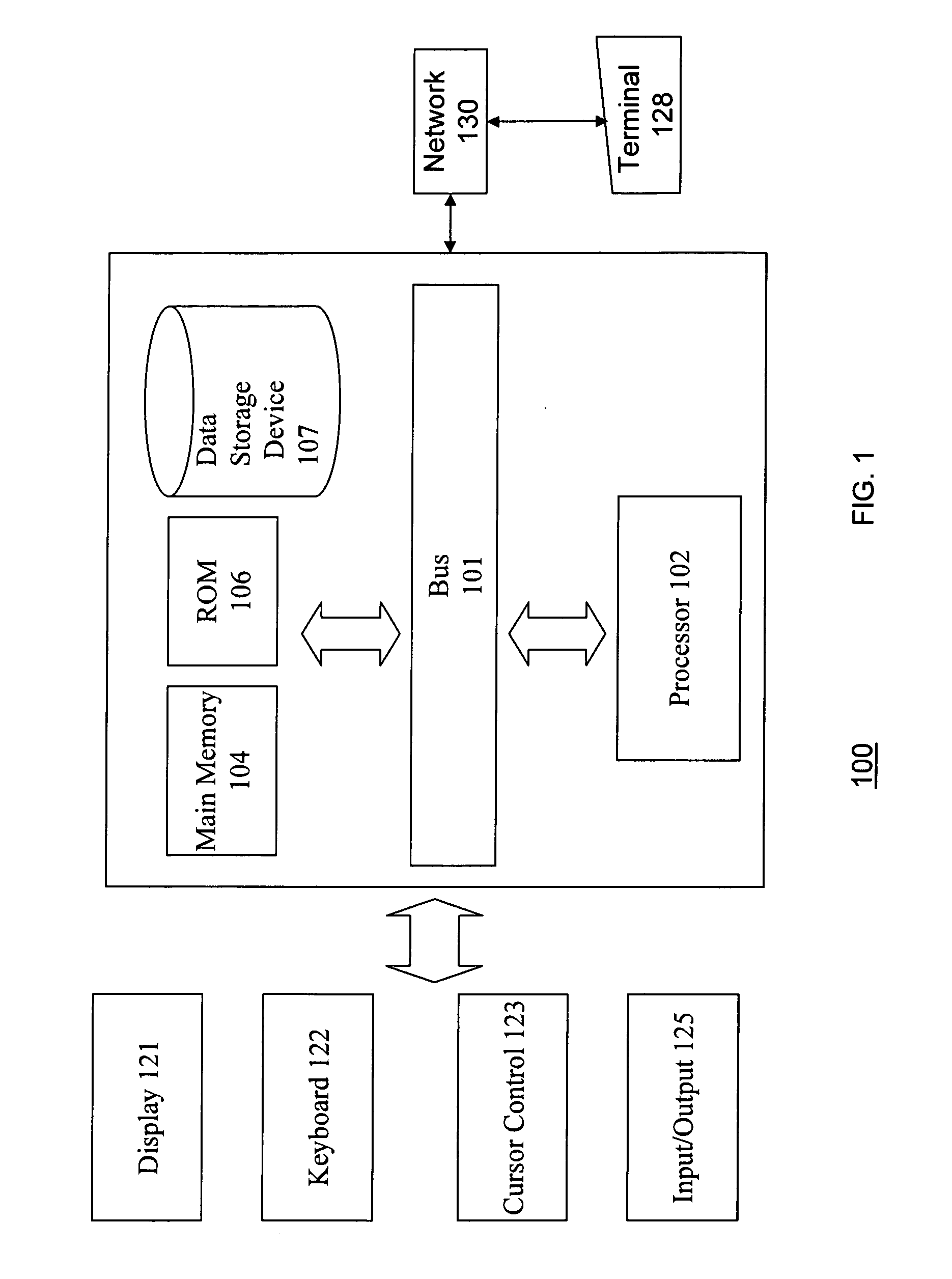System and method for automatic environmental data validation
a technology of automatic validation and environmental data, applied in the field of hydrology and environmental science, can solve the problems of prone to unrealistically high values of optical (turbidity) sensors, inability to characterize higher-frequency aquatic processes, and inability to field samplers in the field
- Summary
- Abstract
- Description
- Claims
- Application Information
AI Technical Summary
Benefits of technology
Problems solved by technology
Method used
Image
Examples
Embodiment Construction
[0023]In the following description like numerals refer to like structures in the drawings.
[0024]Referring to FIG. 1 there is shown a computer system 100 for implementing a hydrological data processing system according to an embodiment of the present invention. The computer system 100 comprises a machine-readable medium to contain instructions that, when executed, cause a machine to execute a hydrological data validation processes as described below. Other instructions may cause a machine to perform any of the methods below including the display of a user interface for initiating, manipulating and interacting with the data validation process. The system 100 may comprise a bus or other communication means 101 for communicating information, and a processing means such as processor 102 coupled with bus 101 for processing information. The system 100 further comprises a random access memory (RAM) or other dynamically generated storage device 104 (referred to as main memory), coupled to bu...
PUM
 Login to View More
Login to View More Abstract
Description
Claims
Application Information
 Login to View More
Login to View More - R&D
- Intellectual Property
- Life Sciences
- Materials
- Tech Scout
- Unparalleled Data Quality
- Higher Quality Content
- 60% Fewer Hallucinations
Browse by: Latest US Patents, China's latest patents, Technical Efficacy Thesaurus, Application Domain, Technology Topic, Popular Technical Reports.
© 2025 PatSnap. All rights reserved.Legal|Privacy policy|Modern Slavery Act Transparency Statement|Sitemap|About US| Contact US: help@patsnap.com



